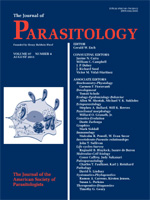Dicyemids (phylum Dicyemida) are endoparasites, or endosymbionts, typically found in the renal sac of benthic cephalopod molluscs. The body organization of dicyemids is very simple, consisting of only 9 to 41 somatic cells. Dicyemids appear to have no differentiated tissues. Although categorization of somatic cells, to some types, is based on differences in the pattern of cilia and their position in the body, whether or not these cells are functionally different remains to be revealed. To provide insight into the functional differentiation, we performed whole mount in situ hybridization (WISH) to detect expression patterns of 16 genes, i.e., aquaglyceroporin, F-actin capping protein, aspartate aminotransferase, cathepsin-L-like cysteine peptidase, Ets domain-containing protein, glucose transporter, glucose-6-phosphate 1-dehydrogenase, glycine transporter, Hsp 70, Hsp 90, isocitrate dehydrogenase subunit alpha, Rad18, serine hydroxymethyltransferase, succinate-CoA ligase, valosin-containing protein, and 14-3-3 protein. In certain genes, regional specific expression patterns were observed among somatic cells of vermiform stages and infusoriform larvae of dicyemids. The WISH analyses also revealed that the Ets domain-containing protein and Rad18 are molecular markers for agametes.
How to translate text using browser tools
1 August 2011
Distinction of Cell Types in Dicyema japonicum (Phylum Dicyemida) by Expression Patterns of 16 Genes
Kazutoyo Ogino,
Kazuhiko Tsuneki,
Hidetaka Furuya
ACCESS THE FULL ARTICLE

Journal of Parasitology
Vol. 97 • No. 4
August 2011
Vol. 97 • No. 4
August 2011




